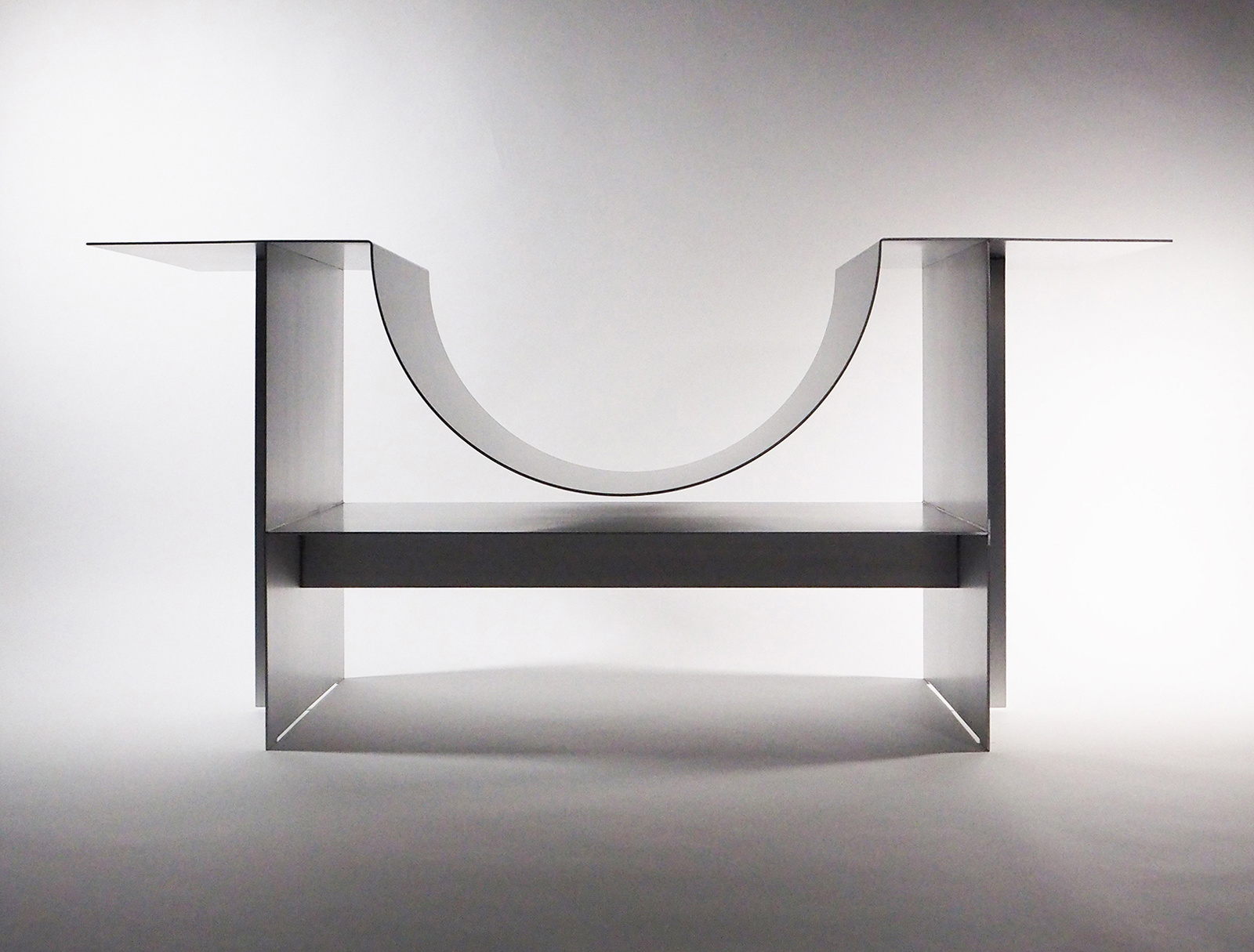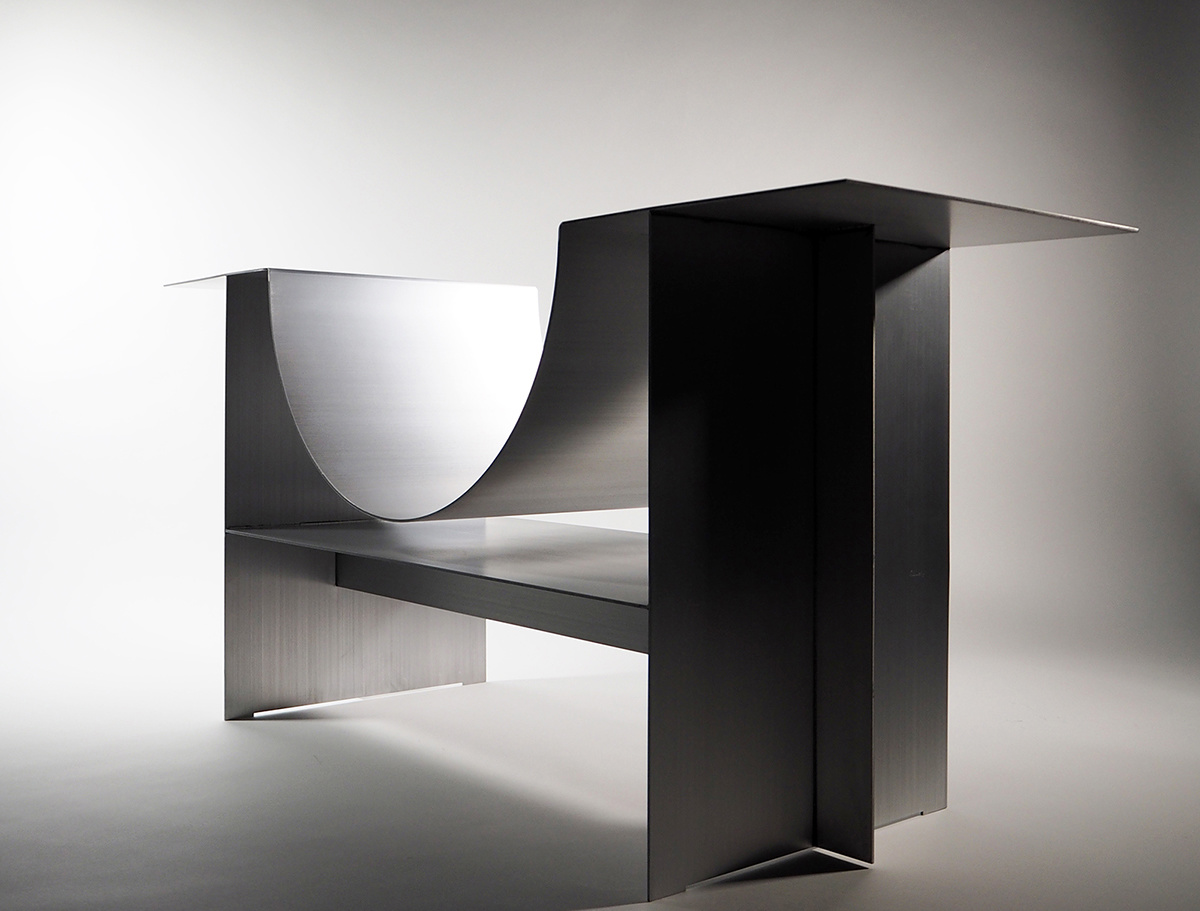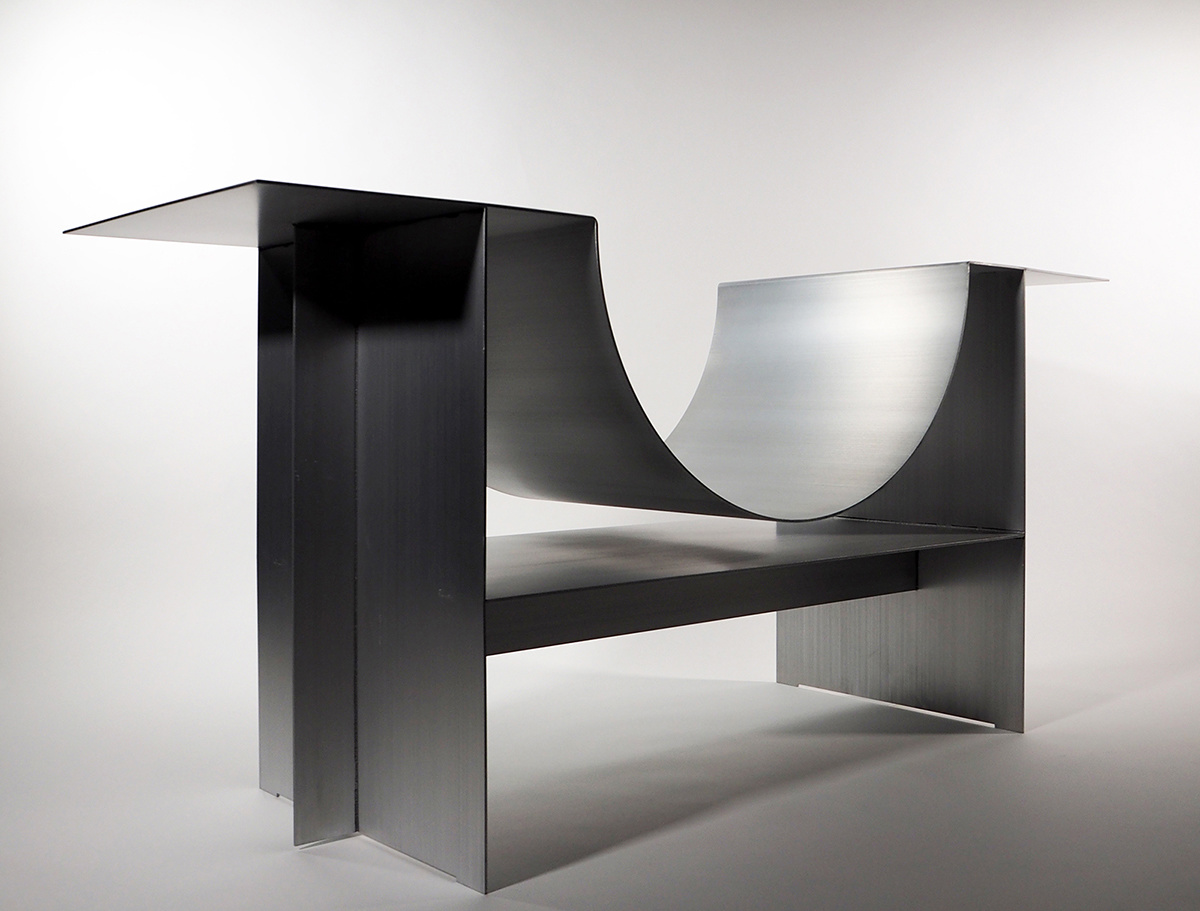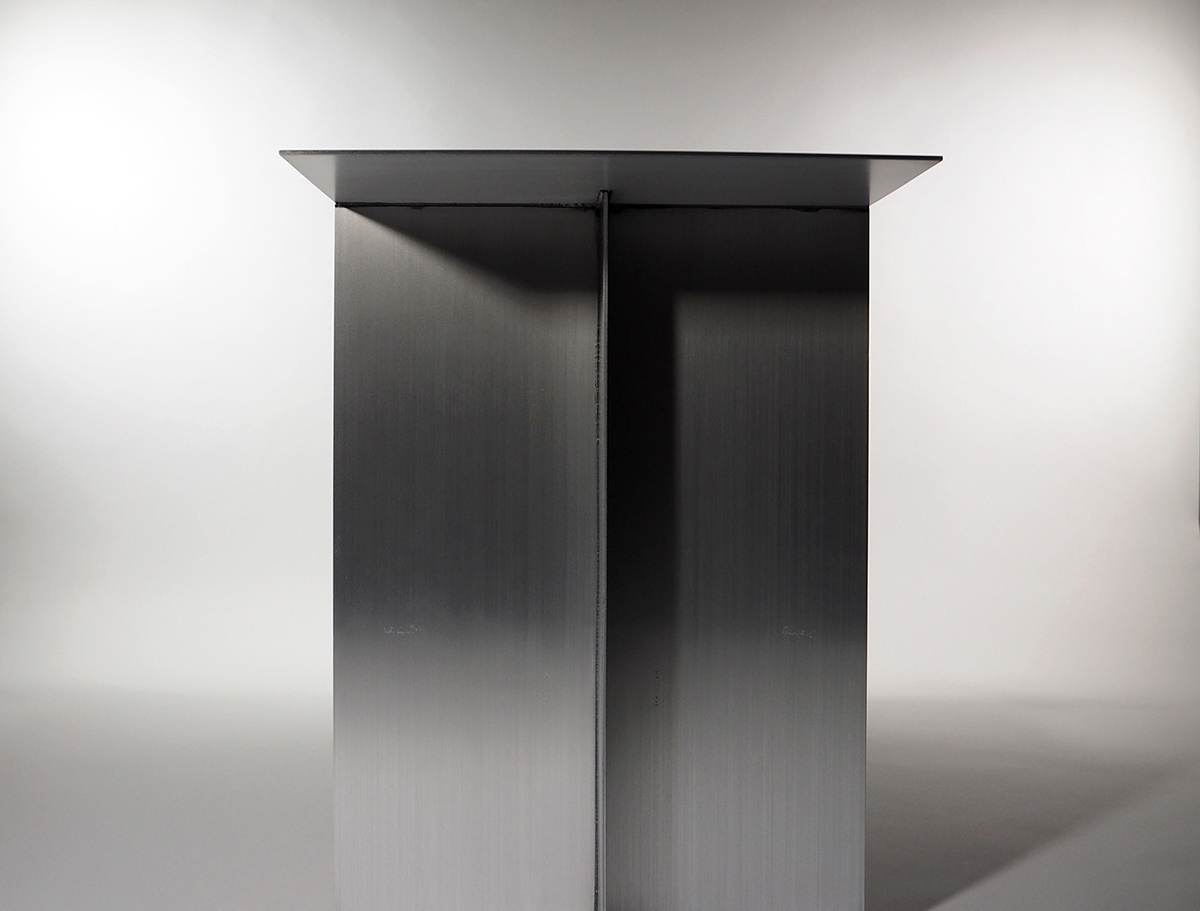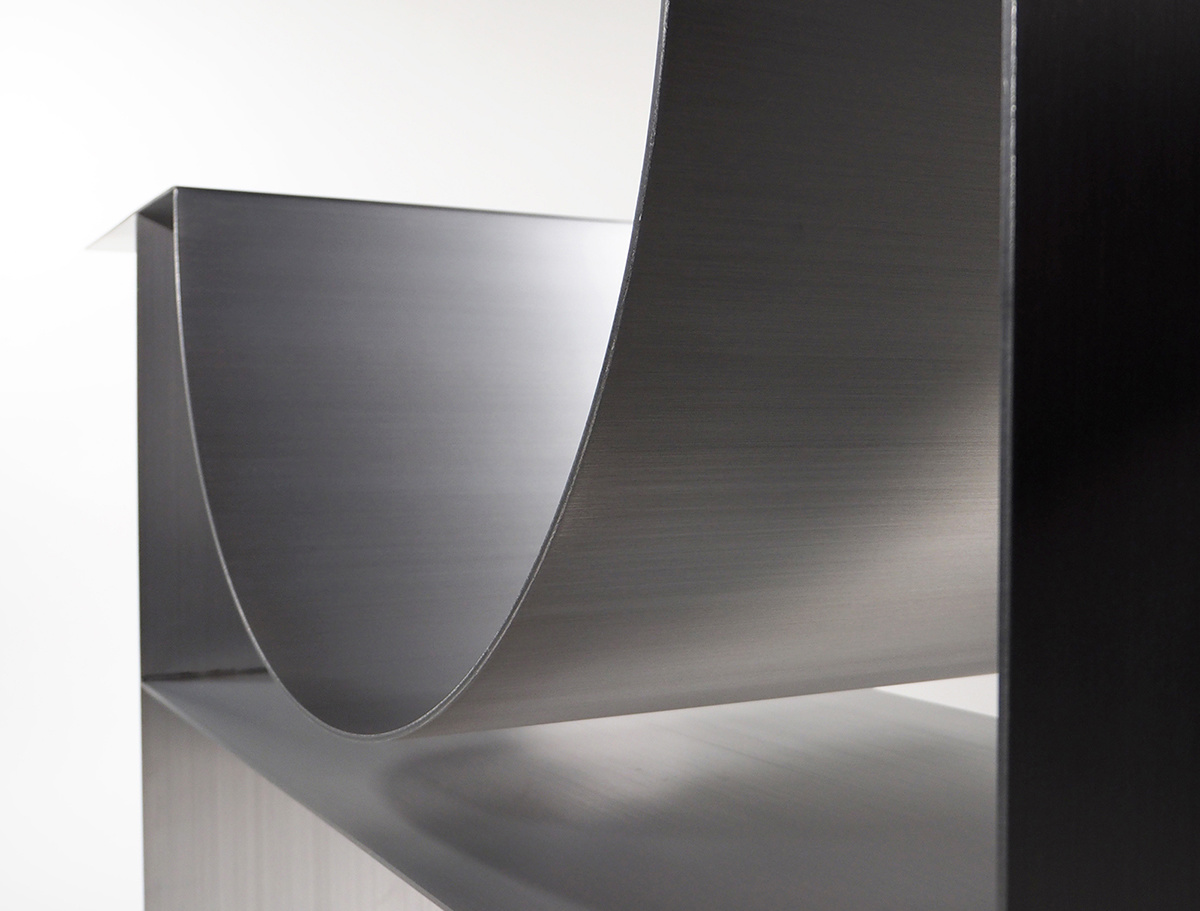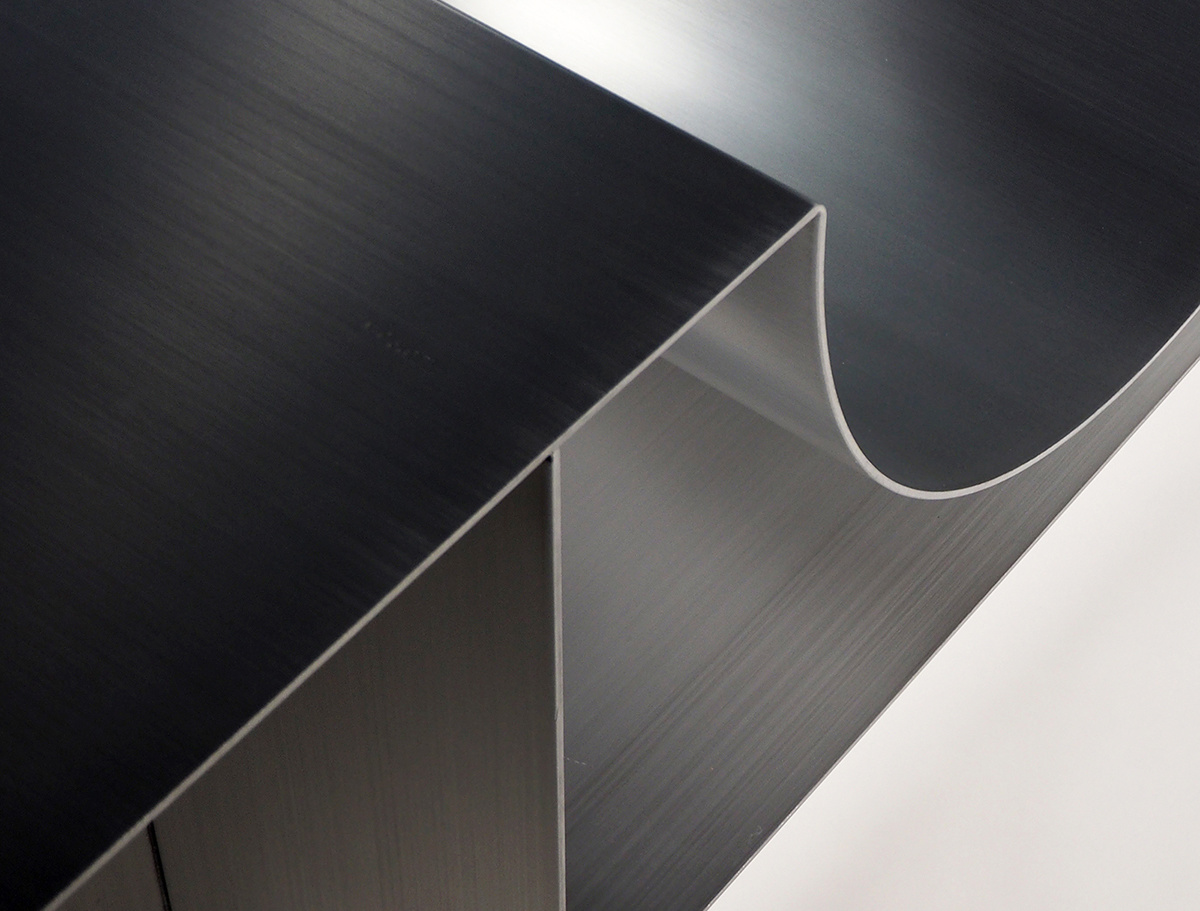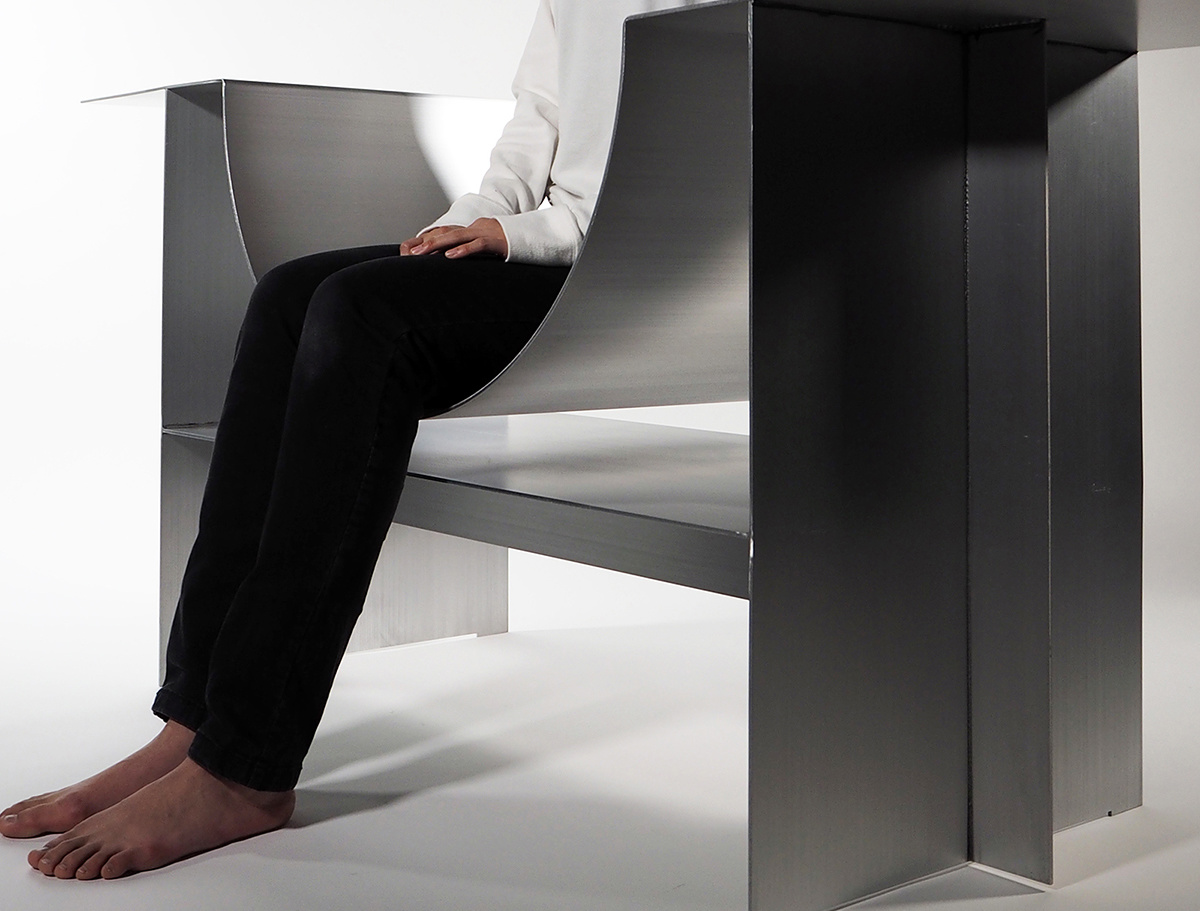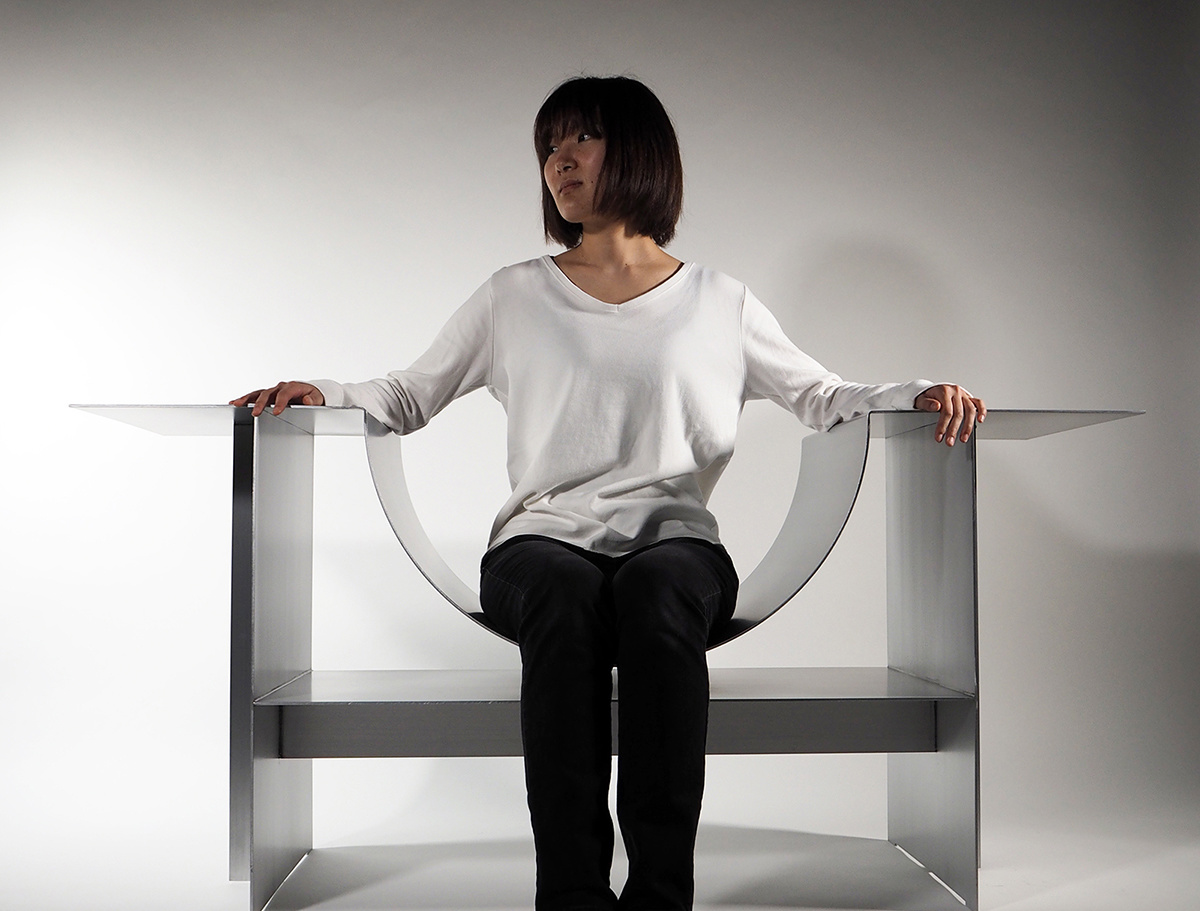
Shades of Brunelleschi
2020
円弧という形状が椅子の座面に使用された例はあまり見たことがない。座り心地の問題など色々な理由から回避されている形状である。だが円弧に座ると、平面で作られた座面より、なぜか包まれた感じがして意外に心地がよい。さらにそれを浮かせると、今までにない座り心地になる。浮遊感を感じるためには、できるだけ薄い素材で作らなければいけない。スチールで製作することは安易だが、椅子自体が非常に重くなる。到底一人では運べない。二人でもかなり大変である。アルミを使用することで、スチールに比べて重さは3分の1となる。だが、アルミはスチールに比べ柔らかい素材であるから、そう簡単には構造的に成り立たない。どこまで薄いアルミでこの形状を作れるか?意外に難題であった。この試行錯誤を半年以上も重ねた結果、部材間の接合の仕方や溶接の仕方を工夫することで、4mm厚のアルミで100kgの重さまで耐えられる椅子が完成した。そのアルミの薄さは、椅子を正面から見るとよく分かるであろう。
前作の「Shades of Michelangelo」に続き、菊川工業株式会社の協力のもと、制作を続けているアルミニウムを使用した実験家具である。
Shades of Brunelleschi
The chair with the arc shape for the seating surface has hardly been seen. It is a shape that is avoided for various reasons such as sitting comfort. However, when you sit in an arc, you feels more wrapped up than a flat seat, which is surprisingly comfortable. If you float it further, you will feel more comfortable than ever before. To feel the floating feeling, you have to make it as thin as possible. It's easy to make it out of steel, but the chair itself will be very heavy. It is impossible to carry it alone. By using aluminum, the weight is one-third that of steel. However, since aluminum is a softer material than steel, it cannot be structurally established so easily. How thin can you make this shape with aluminum? It was a surprisingly difficult task. As a result of repeating this trial and error for more than half a year, we have completed a chair that can withstand a weight of up to 100 kg with 4 mm thick aluminum by devising the method of joining and welding between members. The thinness of the aluminum can be seen by looking at the chair from the front.
Following the previous work "Shades of Michelangelo", this is an experimental furniture made of aluminum, which is being produced with the cooperation of Kikukawa Kogyo Co., Ltd.
■ 椅子
主材及び仕上げ材:アルミニウム
製作:菊川工業株式会社
制作期間:2019年7月〜2020年3月
写真撮影:大松俊紀
*この作品は、桑沢デザイン研究所における2019年度教育研究助成金で制作されました。
■ Chair
material: aluminum
manufacture: Kikukawa Kogyo Co., Ltd.
design year: 2019.07 ~ 2020.03
photo: TOSHIKI OMATSU
*This project is supported by Kuwasawa Design School Research grant 2019.

